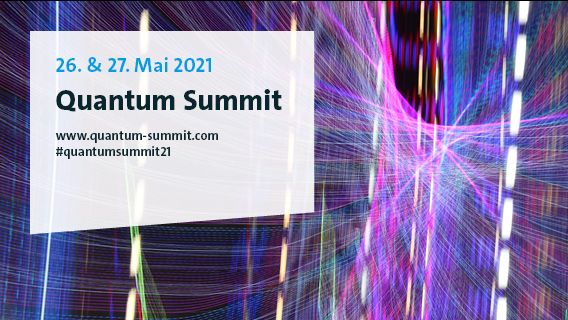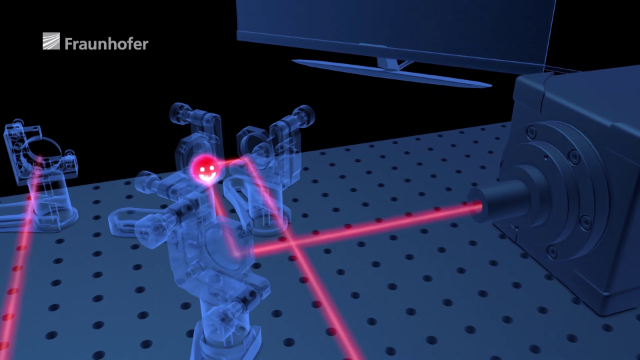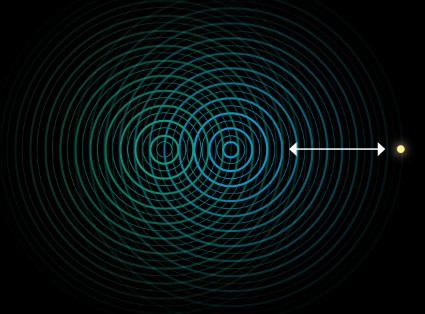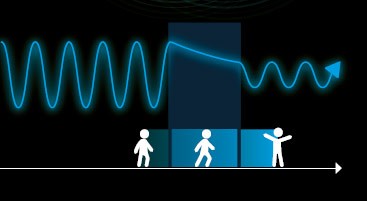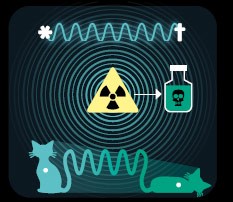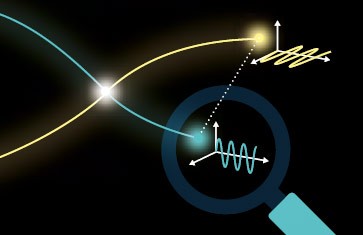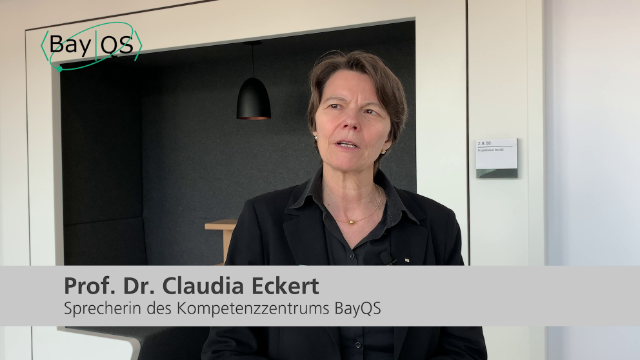We distinguish between different disciplines that make use of the properties of quantum physics.
In quantum computing, so-called qubits are used instead of "conventional" bits to perform computing operations. Qubits can also assume any combination of 0 and 1 by superimposing quantum states. In this way, larger problems and more complex tasks can be calculated in parallel instead of linearly. In order to compute with them, quantum algorithms must be defined and translated. The first quantum computers are already in use – for example, at the Fraunhofer Competence Network in Ehningen. The vision for the future is the quantum Internet, which couples several quantum computers via quantum information.
So-called twin photons are being utilized in quantum communication. They complement each other's properties at all times – regardless of how far apart they are. You only need to measure one to know the state of the other. This can be used for secure physical encryption, which could soon be used to reliably prevent hacker attacks, data leaks, and economic and bank espionage.
Quantum imaging makes use of entangled photons that cover the entire optical spectrum from infrared to ultraviolet. This allows objects to be made visible even in wavelength ranges that were previously invisible. Put simply, a different beam of light is used to examine the object than is used for imaging in the camera. While the one photons are sent to the object to be detected in the invisible wavelength range, the twin photons in the visible spectrum are captured by a camera. Since the entangled light particles carry the same information, an image is formed even though the light reaching the camera never captured the actual object. Applications of these principles are expected to be in medical imaging or in the study of material surfaces.
The discipline of quantum AI combines two current key technologies: quantum computing and artificial intelligence. Quantum computers could rapidly tackle one major problem that digital systems currently struggle with: Mathematically, many AI problems are so-called combinatorial optimization problems, such as determining optimal delivery routes. If such problems are complex, i.e. contain many variables, it is currently very difficult to impossible to find optimal solutions in a reasonable amount of time.
The basic principle of quantum sensing is simple: electrons fly around atomic nuclei, spinning around themselves like a gyroscope. This rotation is called spin – a quantum mechanical property. The electron spin causes a magnetic dipole to form around the electron, which is attracted or repelled by other magnetic fields. For so-called quantum magnetometry, the states of electrons – more precisely, the electron spin – of a very specific defect in the grid structure of diamonds are measured optically. A magnetic field shifts the energies of the spin states, which can be measured by a change in brightness. Quantum sensing opens new doors, especially in medical diagnostics and materials analysis.
